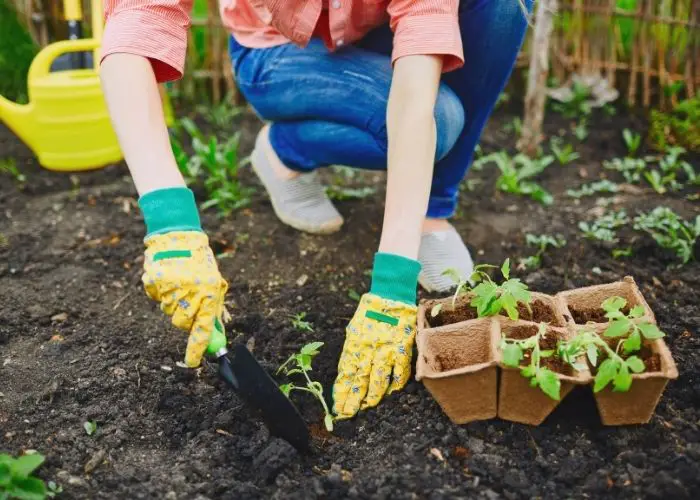Last Updated on January 23, 2022 by Fabiola L.
Tomatoes are an excellent addition to any aquaponics garden. Read this article to understand the key facts about PH for Tomato plants and more about tomatoes!
We all love the delicious fruit of tomato. It can be used to make red sauces or eaten fresh on a salad. But, do you know how tomatoes actually grow?
It is important to learn about a plant before adding it into your aquaponics system. PH level is the measure of how acidic or basic your soil is. Having certain PH levels for a plant is crucial for your success.
The PH determines which functions your plant will be capable of performing. If the PH level does not match the plant, you will surely have a problem.
This is why we created an article to teach you about the PH levels for tomato plants. We want to ensure that you have the most success in your aquaponics system.
After reading this, you will be confident to add tomatoes to your system.
What Is The Ideal Soil PH For Tomatoes?
Before getting specific information about the PH for tomato plants, let’s do an overview of the fruit itself.
The tomato plant is an annual fruit. It will only produce one time per lifecycle. If you want to continue to grow more tomatoes, you have to remove the seed from the fruit and replant it.
Tomatoes come in so many different varieties. You can find very small bitesize cherry tomatoes to large beefsteak tomatoes that are the size of your hand. Each variety has unique characteristics that you need to pay attention to in order to grow it most successfully.
Some varieties are considered bush plants and do not require extra support to stand. However, most tomatoes need some sort of trellis in order for them to grow best.
The branches will grow to be thick and heavy. If you do not support them, they will topple over causing the fruit to get damaged. Supporting your tomato plants is crucial to having healthy fruit.
According to the University of Minnesota, tomatoes are among the most popular vegetables to have in-home gardens around the United States. If you are doing aquaponics, it is likely that you will be interested in growing tomatoes at some point.
Tomatoes can self-pollinate. This means that on each tomato plant, there are male and female flowers.
You do not need to specifically grow a male plant or a female plant. One plant has it all!
Pollinators will hop amongst these flowers to create the fruit. Another useful pollinator is the wind itself! It can blow pollen out of one flower, so it lands into the other.
They like to grow in very hot temperatures in areas that receive 6-8 hours of full sun per day. In terms of soil, they like something that is well-drained. Make sure the clay content of your soil is not too high.
Clay retains water and does not allow it to pass through the roots. If you have too much clay, you can amend the soil with sand.
Best PH Level For Tomatoes
The most optimum PH range for tomatoes is between 6- 6.8. This means that they prefer slightly acidic soil. They are also pretty resilient to higher acidity levels as well.
The lowest PH range that tomatoes can grow in is 5.5. You can measure the PH by using PH test kits available at most garden stores. If you get an indication that the PH level is above 7, you need to bring the PH level down.
There are many different ways to adjust your PH, so that is the perfect level for tomato plants. Generally, it requires adding a more acidic element into your soil. One thing you can use to make your soil more acidic is coffee grounds.
Make sure that the coffee grounds come from organic beans. If the coffee was grown from chemicals, it will go into your plants.
Another thing you can use to lower your soil’s PH is sulfur. Mix powdered sulfur directly into your soil.
Whenever you are amending soil, proceed with caution. You do not want to add too much into your soil so that it becomes too acidic! Start with small amounts and continue to take measurements for feedback.
If your soil is too acidic, you will have serious problems.
But, Do Tomatoes Like Acidic Soil?
As mentioned earlier, tomatoes do like slightly acidic soil. But if it is too acidic, they will not survive.
When soil is too acidic, plants are unable to absorb and process essential nutrients from the soil. It also will lower the plant’s production rate. This means that your plant will either have small, deformed tomatoes or none at all.
If you notice a problem with your tomato plants, check the PH level first to see if anything needs to be changed. You will quickly know if you have a problem and need to make adjustments.
Usually, soil that contains a lot of shells or limestone will be too alkaline. This is a good time to add in the necessary components to lower the PH level.
Sometimes, the soil will be too alkaline to adjust. In this case, consider growing your tomatoes in a container with potting mix or outside soil that is at the correct PH level.
Now you should have a better understanding of the importance of PH for tomato plants. This is an important factor to consider in all growth operations. You can purchase soil PH meters from many garden shops or online.
These insert directly into the soil and provide an immediate reading of the PH level. This is a handy tool for any aquaponics owner or gardener.
As long as you provide the right amount of sun, water, and PH level- you should have great success with tomatoes. So get started, and you will have tomatoes in no time!
Feel free to comment and ask questions below.

Candace is an aquaponics expert with over 5 years of experience in the field. She has a degree in environmental science from the University of California, Berkeley and a degree in aquaponics from the University of Florida. She is passionate about sustainable agriculture and has a deep knowledge of aquaculture and hydroponics. She has worked on numerous projects and has been involved in the development of aquaponic systems and fish farms. She also has experience in designing and constructing aquaponic systems. With her expertise, Candace is able to advise clients on the most effective and efficient way to construct and manage their aquaponic system. She is an active member of the aquaponic community, often speaking at conferences and seminars. Candace is dedicated to helping others understand the importance of aquaponics, and she is a strong advocate for sustainable food production.

